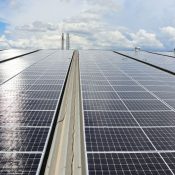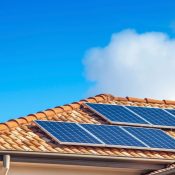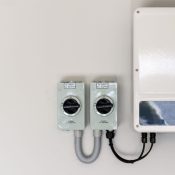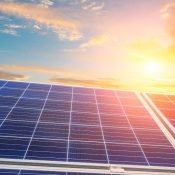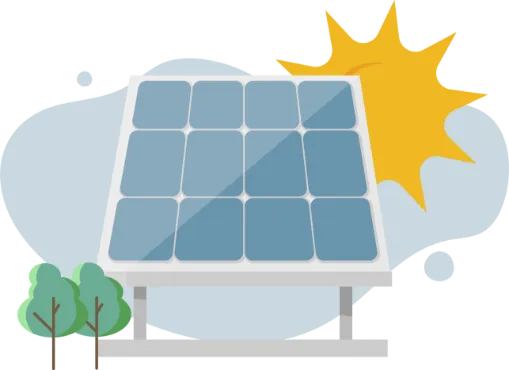Solar Panel Shading Solutions: Optimising Performance in Shaded Areas
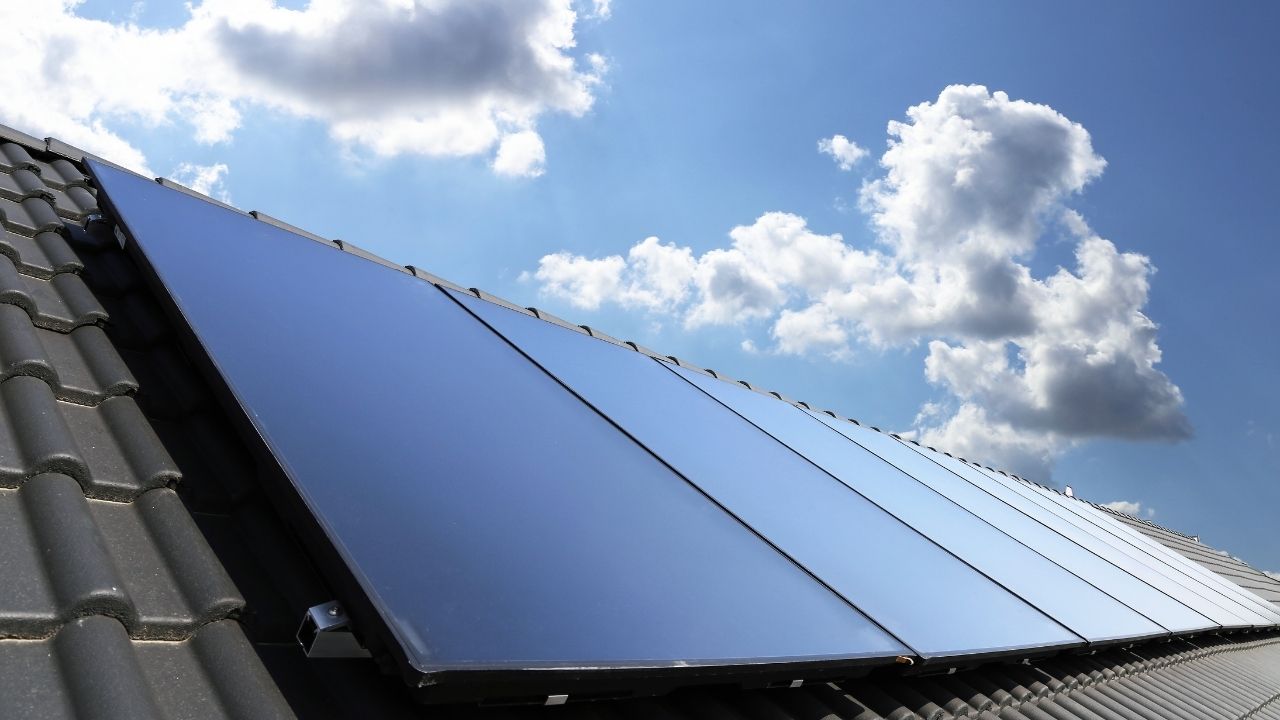
Do you have solar panels installed at your property and are facing the problem of shaded areas causing a dip in energy production? We understand your concern, as we’ve grappled with this issue, too, and discovered that shading can reduce the power output by over 75%.
That’s why we’ve researched extensively to bring you effective solutions for optimising solar panel performance, even in shaded areas. Dive into this guide to enlighten yourself on strategies for maximising energy generation from your sun-powered systems, regardless of shadows.
Impact Of Shading On Solar Panel Performance
Shading significantly reduces energy production and can potentially damage solar panels, negatively affecting the system’s efficiency.
Reduction In Energy Production
Shadows on solar panels disrupt the energy flow, leading to significant drops in power output. Think about a cloudy day versus a clear, sunny day – like solar panels.
A shaded panel isn’t at its peak performance level since the sunlight can’t fully reach all cells on the surface. This scenario limits electricity generation and can reduce total energy production by over 75%, especially if even one cell is shadowed.
It’s like trying to listen to your favourite radio station when you’re out of range; there might be some signal, but it must be more transparent and robust for optimal listening.
In our case, that translates into weakened power generation from your solar system due to shading obstacles obstructing total sun exposure on your panels.
Potential Damage To Panels
Shading not only reduces the energy production of solar panels but can also potentially cause damage to them. When shaded, panels generate less power, which can decrease overall efficiency.
Additionally, shading causes some cells within the panel to become inactive, reducing voltage and current output. This imbalance can create hotspots on the panel’s surface, leading to cell degradation or permanent damage over time.
It is essential to address shading issues and take necessary precautions to protect your solar panels from potential damage caused by shading.
Adverse Effects On Overall System Efficiency
Shading can have adverse effects on the overall efficiency of solar PV systems. When shadows fall on solar panels, it reduces the amount of sunlight reaching the surface, affecting power output.
Shaded panels generate less energy, leading to a decrease in overall system performance. Even if only one cell is shaded, shading analysis has shown that output power can be reduced by over 75%.
Solar designers must address shading issues during the design phase to maximise efficiency and minimise losses. Techniques such as using micro-inverters and power optimisers at the panel level can help optimise individual panel performance and mitigate the impact of shading on system efficiency.
Solutions for Optimising Solar Panel Performance in Shaded Areas
To optimise solar panel performance in shaded areas, homeowners can use solar panel optimisers and smart devices, implement a well-designed system, run panels in parallel, and ensure proper maintenance of the panels.
Use Of Solar Panel Optimizers And Smart Devices
Solar panel optimisers and intelligent devices are effective solutions for optimising the performance of solar panels in shaded areas. These innovative technologies work by maximising the power output of each panel, even in partially shaded conditions. By using these devices, Irish homeowners can overcome shading issues and ensure that their solar systems continue to generate energy efficiently.
- Enhanced performance: Solar panel optimisers enable each panel to operate independently, allowing them to work at their maximum capacity even if other panels are shaded. This ensures that the overall system efficiency is not compromised by shading.
- Real-time monitoring: Smart devices, such as monitoring systems, provide real-time data on the performance of each panel. Homeowners can identify and address shading issues immediately, ensuring optimal energy generation.
- Increased energy production: By optimising the performance of shaded panels, solar panel optimisers and intelligent devices help maximise energy production in areas with limited sunlight. This allows homeowners to generate more clean energy, reducing reliance on traditional fossil fuels.
- Extended system lifespan: Shading can cause hotspots on panels, leading to potential damage and reduced lifespan. However, with solar panel optimisers and smart devices, the workload on each panel is balanced, minimising the risk of damage and ensuring a longer lifespan for the entire system.
- Improved return on investment: By maximising energy production in shaded areas, solar panel optimisers and smart devices offer homeowners a higher return on their investment in solar power systems. This makes it a cost-effective solution for those looking to harness renewable energy while living in regions prone to shade.
Implementing A Well-Designed System
It is crucial to implement a well-designed system to optimise the performance of your solar panels in shaded areas. This involves carefully planning and positioning your panels to minimise shading and maximise sunlight exposure.
You can significantly improve their energy production by strategically placing the panels in unshaded areas and avoiding obstructions that cast shadows. Additionally, using shading analysis tools during the design phase will help you identify potential shading issues and make necessary adjustments to mitigate their impact on system performance.
A well-designed system can enhance your solar panels’ efficiency, reliability, and durability, even in shaded environments.
Running Panels In Parallel
Running panels in parallel is an effective solution for optimising solar panel performance in shaded areas. Connecting multiple panels in parallel allows each panel to operate independently and generate electricity without being affected by shading on other panels.
This means that even if some panels are partially shaded, the system can still produce energy more efficiently. Running panels in parallel also helps to minimise the impact of shading on system performance, as it distributes the power generation across multiple panels instead of relying solely on one panel.
This ensures that even if certain solar array sections are shaded, other unshaded sections can continue to generate power efficiently. So, running solar panels in parallel is a practical strategy to maximise energy production and optimise performance in areas with shading challenges.
Proper Maintenance Of Solar Panels
To maximise the performance of your solar panels, it’s essential to ensure proper maintenance. Regularly cleaning the panels helps remove dust, dirt, and debris that can block sunlight and reduce energy production.
Check for any damage or loose connections and make necessary repairs immediately. Additionally, keep an eye on the surrounding vegetation and trim any overhanging branches that may cast shadows on the panels.
By taking these simple steps, you can optimise the efficiency of your solar panel system and ensure it continues to generate clean energy for years to come.
Benefits Of Solar Panels That Work In The Shade
Solar panels that can operate in shaded areas offer numerous advantages. They increase energy production in places with limited sunlight and improve system efficiency.
These shade-tolerant panels have enhanced reliability and durability, making them a worthwhile investment for homeowners seeking optimal performance from their solar panel systems.
Increased Energy Production In Shaded Areas
We understand that shaded areas can pose challenges for solar panel performance. However, solutions are available to maximise energy production even in such conditions. We can identify and address shading issues in real time by implementing shading analysis tools and using smart module technology.
Additionally, using micro-inverters and power optimisers at the individual panel level can help optimise performance and enhance energy production in shaded areas. Proper placement and orientation of solar panels also play a crucial role in minimising the impact of shading on system performance. With these strategies, homeowners can still enjoy increased energy production from their solar panels, even in shaded areas.
So, we learn that every Irish homeowner must know how shading affects solar panel performance and take proactive measures to overcome these challenges. If you are looking for solutions to shedding, contact Going Solar. They will provide consultation and guide you on utilising advanced technologies and optimising system design. With their help, it is possible to increase energy production even in shaded areas of Dublin.
Improved Efficiency And Performance
Optimising the efficiency and performance of solar panels in shaded areas is crucial for maximising energy generation. By utilising shading analysis tools during the design phase, solar designers can strategically place panels to minimise the impact of shadows.
Additionally, incorporating micro-inverters and power optimisers at the individual panel level can help optimise performance by mitigating shading losses. Smart module technology, such as real-time monitoring and panel-level optimisation, aids in identifying and addressing shading issues promptly.
Ultimately, these techniques enhance solar panels’ overall efficiency and performance in shaded environments.
Enhanced Reliability And Durability
Another key benefit of solar panels that work in shaded areas is their enhanced reliability and durability. These panels are designed to withstand challenging conditions, such as shading or partial sunlight, without compromising performance.
By using advanced technologies like micro-inverters and power optimisers, these panels can maximise energy production even when faced with shading issues. Also, proper placement and orientation of the meetings and regular maintenance ensure that they continue operating efficiently over time.
With enhanced reliability and durability, homeowners can have peace of mind knowing that their solar panel system will consistently generate clean energy for years to come.
Conclusion
Optimising solar panel performance in shaded areas is crucial for maximising energy production and ensuring the efficiency of PV systems. By implementing shading solutions such as smart devices, well-designed systems, and proper maintenance practices, homeowners can overcome the challenges posed by shading and enhance the output and reliability of their solar panels.
With advancements in technology and innovative techniques, it is now possible to harness solar power even in shaded environments, allowing homeowners to utilise solar energy’s benefits fully.
Planning a switch to solar energy?
Contact Going Solar now and Get Free Advice & Quote Within Minutes!
Frequently Asked Questions
Contact Going Solar Now!
Joe Brennan
Founder @ Going Solar
Joe Brennan, the founder of Going Solar, is dedicated to making solar power mainstream in Ireland and meet SEAI objectives. With a focus on affordability and sustainability, he is bringing renewable energy solutions to homes, reducing costs & environmental impact.
Recent Posts

